15 Mb white spot

What is 15 MB by modern standards? Several photos with good resolution and quality, several updates to the public page of lovers of seals, a modestly decorated presentation, a song in MP3 format. In general, 15 megabytes - the size is small. But in MAPS.ME so weighs a giant white spot on the world map. This spot is one of the harshest and least studied places on land, with many examples of triumphs and defeats of scientists and researchers associated with it. White spot size of 15 MB - Antarctica.
Antarctica has a special legal status: this is probably the last territory in the world that does not belong to any country. Exactly 56 years ago, on 23 June 1961, the Antarctic Treaty entered into force, implying complete demilitarization, freedom of scientific research, a ban on the disposal of radioactive materials and testing of atomic weapons, as well as the protection of the marine and terrestrial biosphere of the Antarctic region.
On the MAPS.ME map, the whole continent fits into only 15 MB, because there are not many interesting and memorable places shown here. Let's remember some of them, and see where they should be located on the map.
By the way, if it were not for the Treaty, then Antarctica would have been torn to pieces for a long time, and it is possible that this would have resulted in military clashes - before 1961, seven countries formalized their claims on the territory:
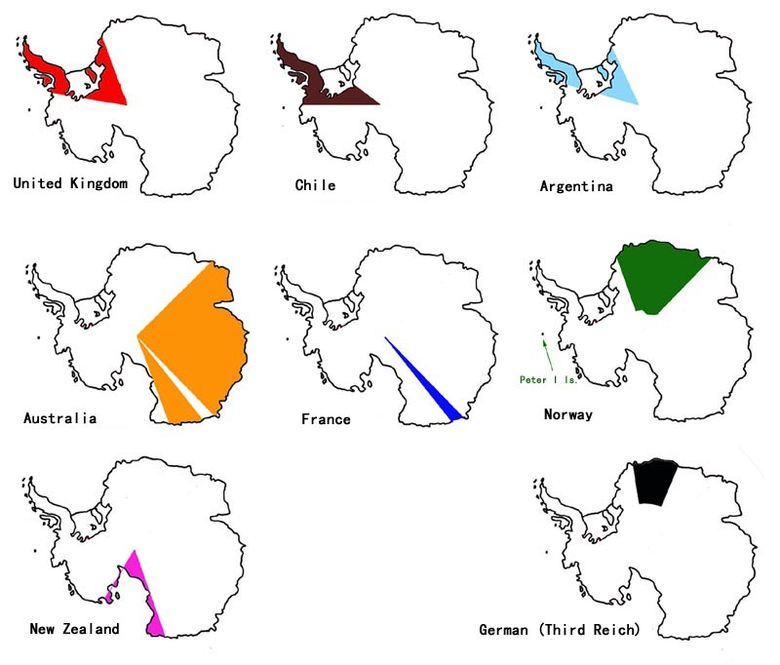
It would seem, who needs millions of square kilometers of ice on the edge of the world, with wild blizzards and cold? Everything is very simple - the shelf and continental deposits of hydrocarbons and other minerals. Fortunately, in 1991, the Antarctic Treaty was supplemented by a protocol prohibiting the mining of mineral resources. Today it is believed that there are good deposits of oil, gas, iron, coal, copper, nickel, lead, zinc, and molybdenum in Antarctica. Of course, to get at least to the ground, you will first have to drill ice from 1 to 4 km thick (!). According to various estimates, the Antarctic ice sheet contains about 60-70% of the world's freshwater resources.
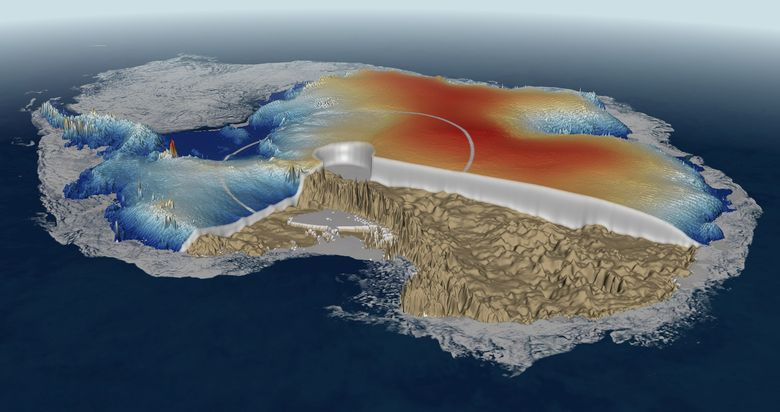
What will Antarctica look like if it suddenly loses ice (without taking into account the rise of the ocean level due to the melting and rise of the earth's crust, freed from the weight of the ice sheet):

Antarctica was not always covered with kilometers of ice. In prehistoric times, another 65 million years ago in Antarctica there was a subtropical climate. And it was a single continent with Australia, which was connected by a land bridge with modern South America. In Antarctica, forests rustled, and in general there was a rich flora and fauna. 55 million years ago, Australia began to separate, and 35 million years ago, gradual changes in ocean currents led to the fact that much less heat began to reach Antarctica.
Since then, the continental glaciation began, and it gradually turned into an icy desert. And in the desert in the most direct sense: it is in Antarctica is the most arid place on the planet, and not at all in the African sands. There are so-called dry McMurdo valleys on the southern continent: a small piece of land about 8 thousand km 2 , which has not been covered with ice for 8 million years . And it is not covered because the katabatic winds are constantly blowing here, the speed of which reaches 320 km / h! No precipitation simply lingers here, it blows them away. In some areas of the McMurdo valleys there was no rain at all for the last 2 million years.
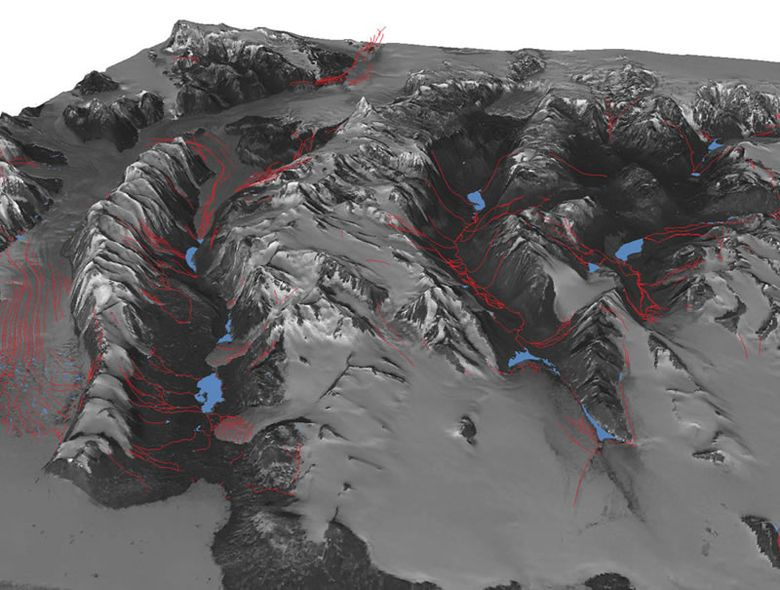
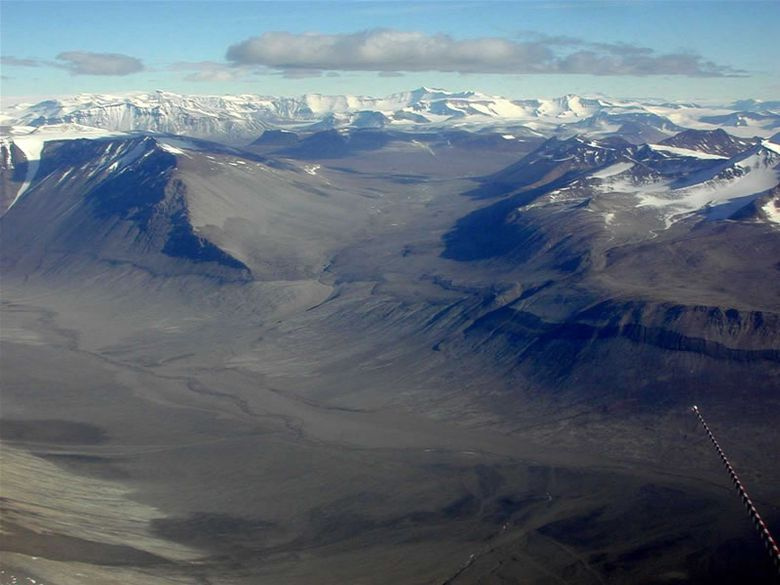
In one of the valleys - the valley of Taylor - is a landmark, Bloody Waterfall. This is a place of water from the subglacial lake, located a few kilometers from the waterfall. Red is due to the presence of iron oxides (rust). Moreover, scientists have found that water from the lake carries traces of microorganisms that have adapted to life in the conditions of eternal darkness and the absence of useful substances have adapted to survive due to the chemical reaction of sulfate reduction to sulfites, followed by oxidation.
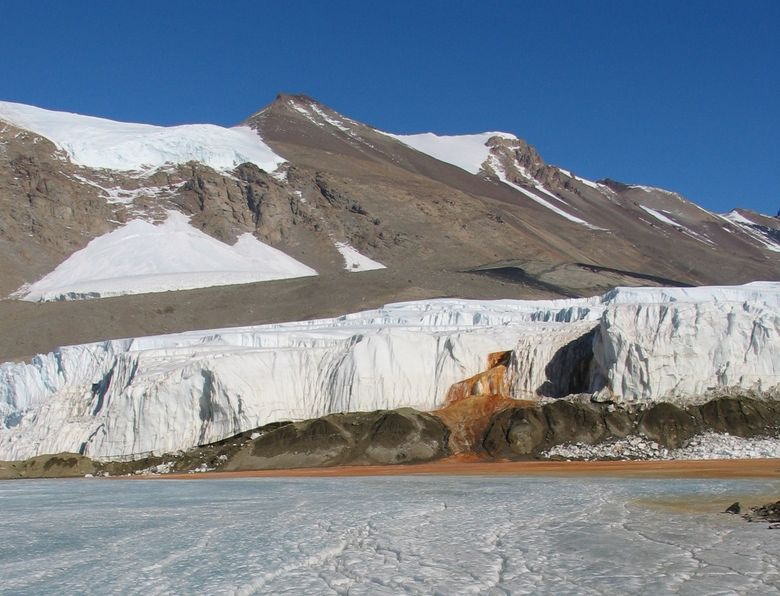

Generally speaking, about 150 ice lakes are found in Antarctica. The huge mass of the ice sheet leads to the melting of the lower layers of ice, liquid water accumulates in the lowlands, and under favorable conditions does not freeze, and lakes arise in eternal darkness under kilometers of ice. The largest ice lake in Antarctica is Lake Vostok. It was named in honor of the nearby Soviet research station "Vostok".

Satellite sensing results:

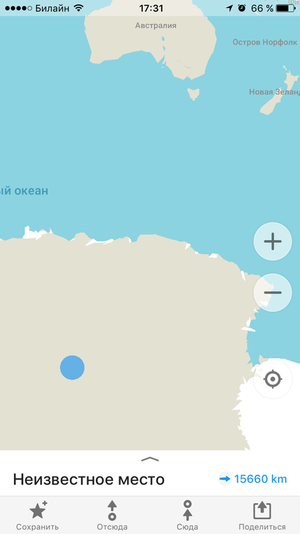
Estimate the size of the lake: about 250 to 50 km, depth 1.2 km. For comparison, Lake Baikal has dimensions of 636 by 80 km, the maximum depth is 1.6 km. It is believed that the East exists under the ice of almost 4-kilometer thickness for several million years. The water pressure in the lake is estimated at 300 atmospheres.
In 1989, drilling of the well 5G-1 began, which, by 1995, had been brought to a depth of 3.5 km, and the obtained ice samples confirmed that there is indeed a lake somewhat deeper. After that, they stopped drilling, and in 2006 they continued. The boundary of the reservoir was reached in February 2012 at a depth of 3769 m.
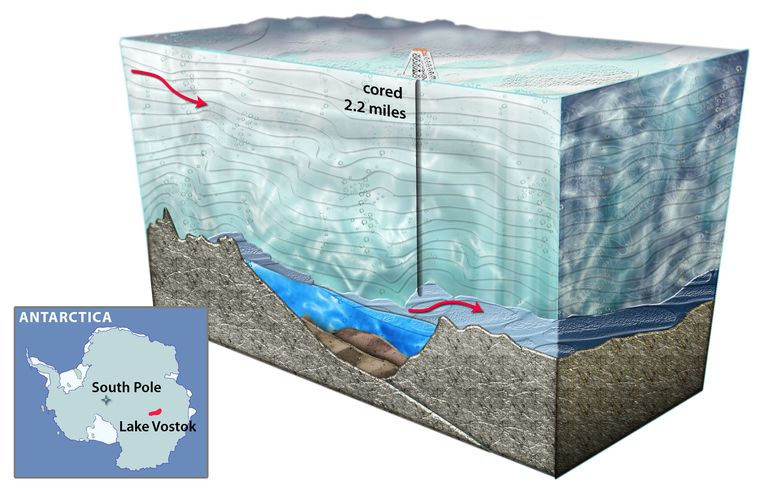
The first domestic Antarctic station, Mirny, was opened in 1956. There is even an airfield.
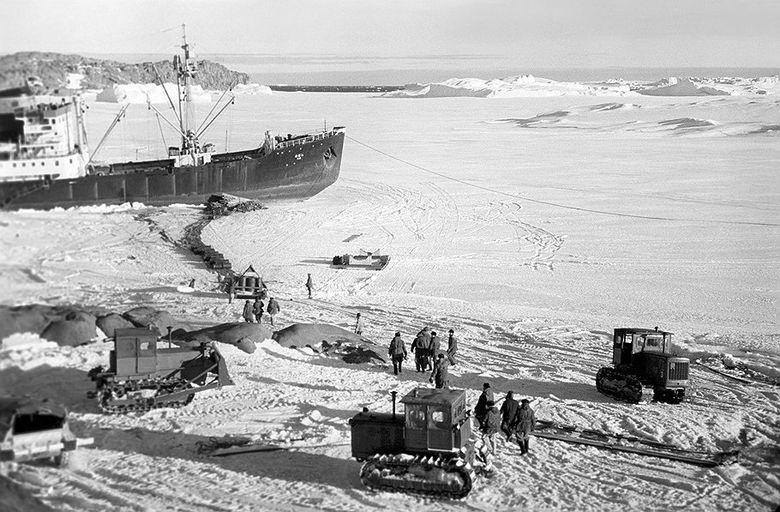
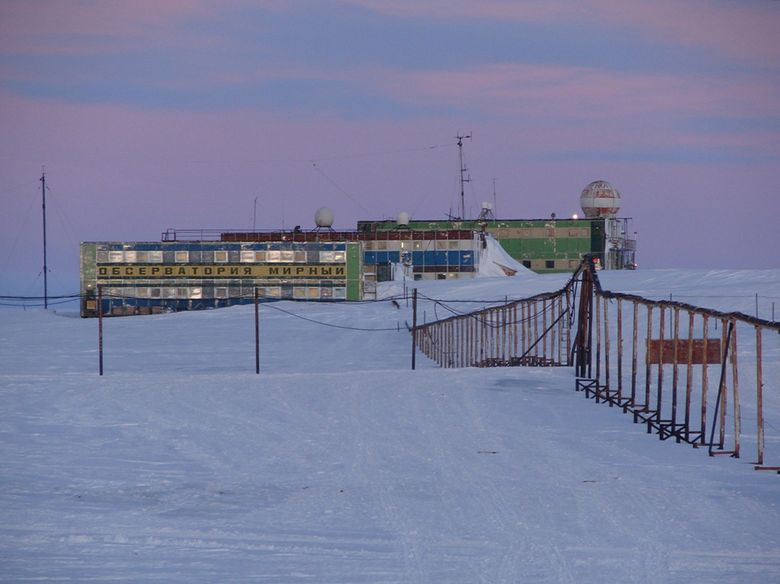

And “Vostok” is our second station in Antarctica, founded in 1957. In 1983, the lowest temperature on the planet was registered here: –89.2 degrees Celsius. And the warmest thing here was in the year of the station's foundation: –13.6 degrees. The average temperature of the warmest months of the year is about –35 degrees. However, scientists believe that in Antarctica there are places where it can be even colder, just there are no weather stations to confirm this. For example, in the region of the highest point of Antarctica - the Dome of Argus.
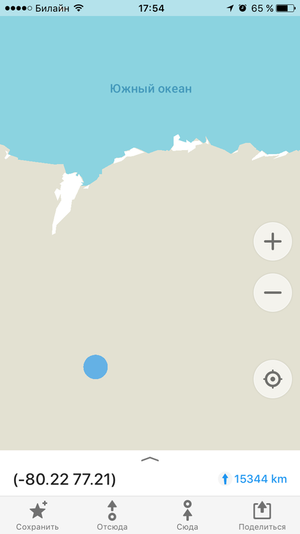
Another attraction of Antarctica is the Erebus volcano - the southernmost active volcano on the planet.
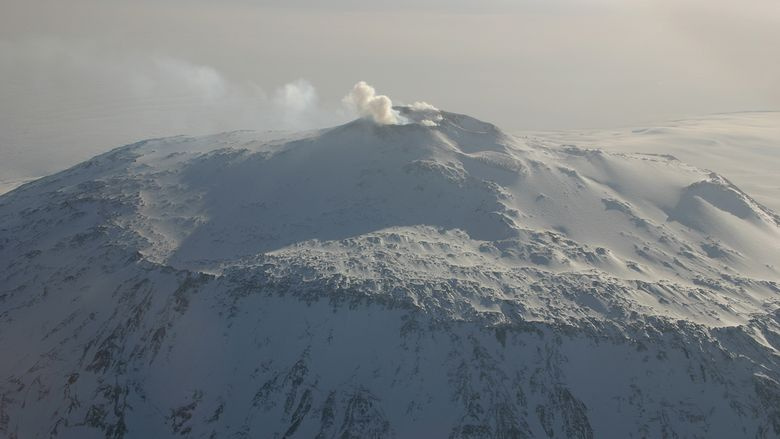
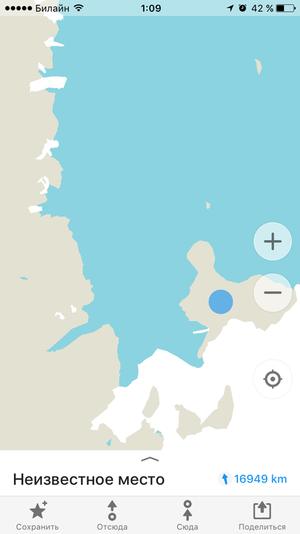
And the highest mountain of Antarctica is Vinson Peak, 4892 m, included in the Vinson Massif.
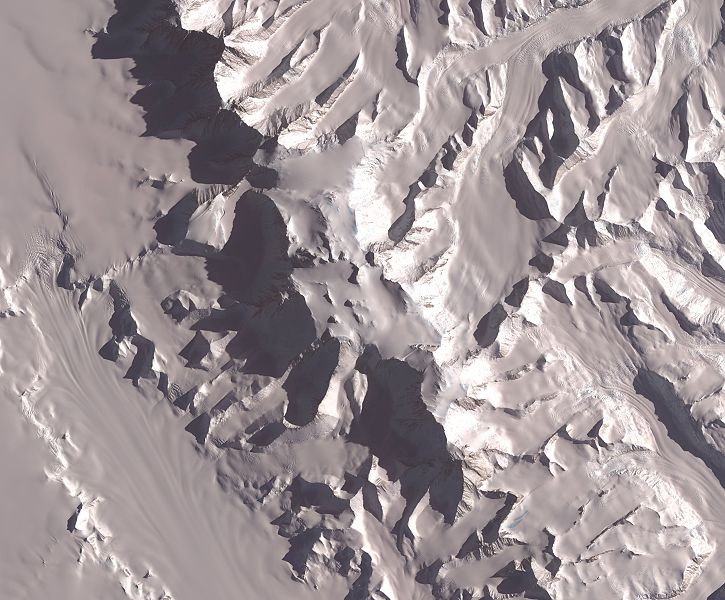

As you can see, a lot of interesting places can be put on the map of Antarctica. There are 89 research stations on the continent alone, not to mention the natural sights and places of memorable events in the short history of communication between Antarctica and humanity.
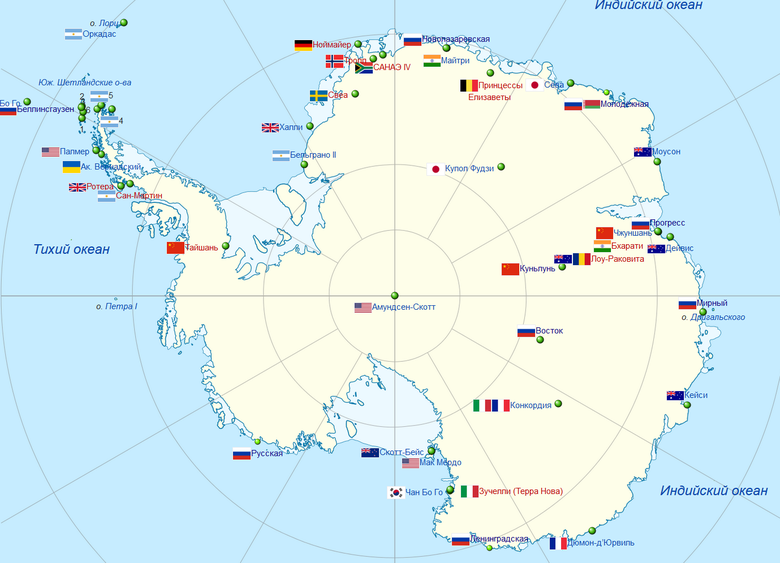
PS And Antarctica also has its own Internet domain - .aq.
')
Source: https://habr.com/ru/post/373569/
All Articles